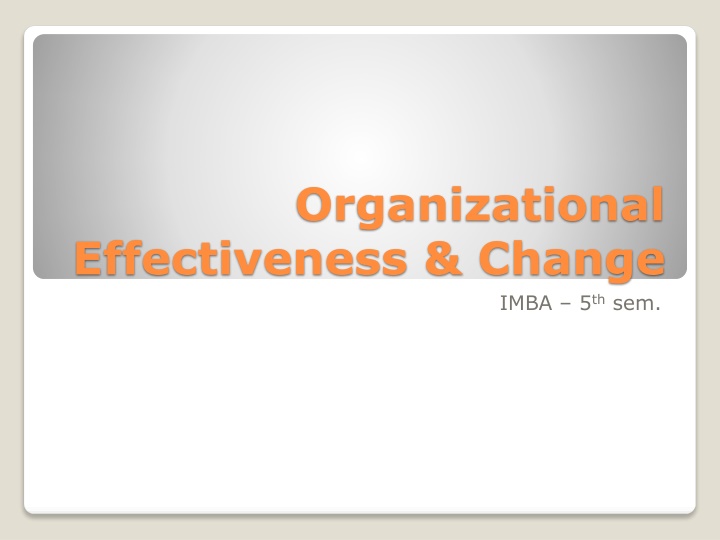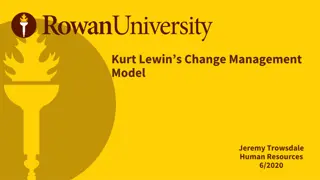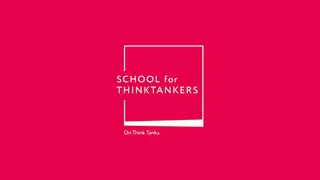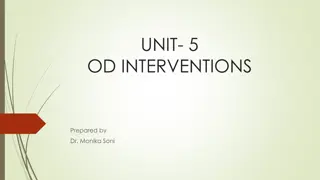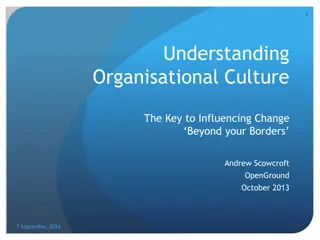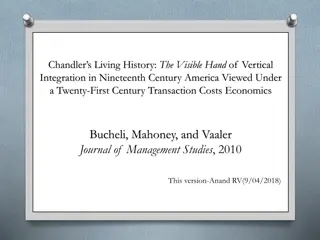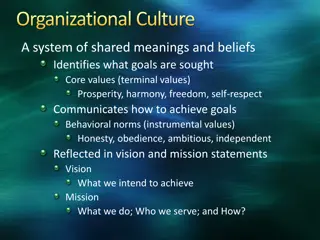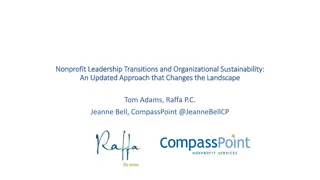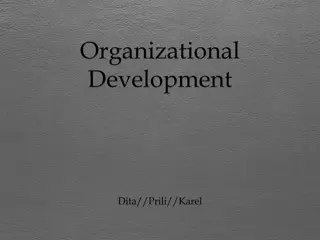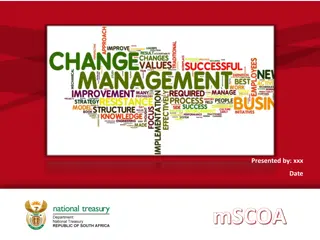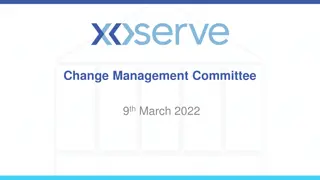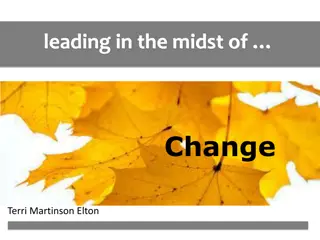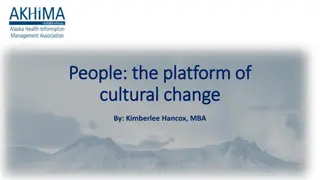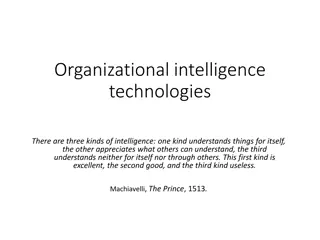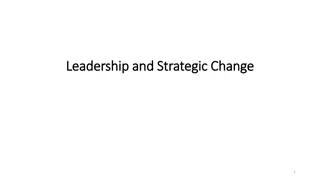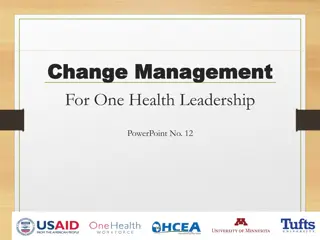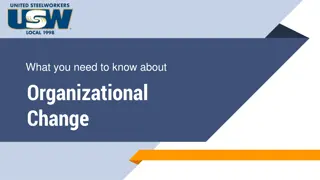Essential Aspects of Organizational Change
This content explores organizational change, including planned and unplanned changes, the role of change agents, Kurt Lewin's change model, force field analysis, types of organizational change, forces for change, resistance to change, and strategies to overcome resistance.
Download Presentation

Please find below an Image/Link to download the presentation.
The content on the website is provided AS IS for your information and personal use only. It may not be sold, licensed, or shared on other websites without obtaining consent from the author.If you encounter any issues during the download, it is possible that the publisher has removed the file from their server.
You are allowed to download the files provided on this website for personal or commercial use, subject to the condition that they are used lawfully. All files are the property of their respective owners.
The content on the website is provided AS IS for your information and personal use only. It may not be sold, licensed, or shared on other websites without obtaining consent from the author.
E N D
Presentation Transcript
Organizational Effectiveness & Change IMBA 5thsem.
Organization change occurs when business strategies or major sections of an organization are altered Organizational change
A change agent is a person from inside or outside the organization who helps an organization transform itself by focusing on such matters as organizational effectiveness, improvement, and development. Change Agent
Organizational change: process Kurt Lewin's change model
Lewin extended his theory by including force field analysis which offers direction for diagnosing situations and managing change within organizations and communities. Force Field Analysis
Strategic Structural Process oriented People centered Types of Organizational Change
Forces for change External Forces Technology Marketing Conditions Social Changes Political Forces Internal Forces Nature of the Work Force Change in Managerial Personnel Deficiencies in Existing Management Structure To Avoid Developing Inertia
RESISTANCE TO CHANGE Threats to the Power Structure Structural Inertia System Relationships Vested Interest Group Inertia Organizational Structure Threat to Specialization Resource Constraints
How to Overcome Resistance to Change in an Organization Education and Communication Participation and involvement Facilitation and Support Negotiation Co-optation and manipulation Explicit and implicit coercion
John Kotter's 8-step change model is widely accepted across all industries as an effective model for implementing organizational change. Kotter's 8-Step Model
Establishing a Sense of Urgency Creating the Guiding Coalition Creating and Communicating a Vision for Change Empowering Broad- Based Action Generating Short- Term Wins Build on Change Make it part of the culture Applying Kotter's 8-Step Model
Action research refers to a wide variety of evaluative, investigative, and analytical research methods designed to diagnose problems or weaknesses whether organizational, academic, or instructional and help educators develop practical solutions to address them quickly and efficiently. ACTION RESEARCH
Entry (Problem identification) Contracting (Consultation with a behavioral science expert) Diagnosis (Data gathering and preliminary diagnosis) Feedback (Feedback to a key client or group) Action Research Model
According to French and Bell, "Organizational development is a long range effort to improve an organization's problem-solving and renewal processes, particularly, through a more effective and collaborative management of organization culture with special emphasis on the culture of formal work teams with the assistance of a change agent or catalyst and the use of the theory and technology of applied behavior science, including action research . ORGANIZATIONAL DEVELOPMENT
Individual or Interpersonal Level. Team or group level. Intergroup level. Total organizational system level Organization Development Interventions
Coaching and Mentoring Stress Management Career Planning Sensitivity Training Job Redesign Individual or Interpersonal Level Interventions
Team Building Process Consultation Survey Feedback Team or Group Level Interventions
Microcosm groups and inter-group conflict resolution Third-party intervention Intergroup Level Interventions
Organization Development through Grid Training Organization confrontation meeting Reengineering or Techno-structural intervention Structural Re-design Strategic Interventions Total Organizational Level Interventions
